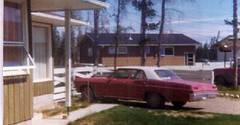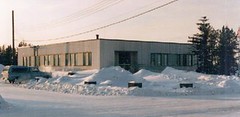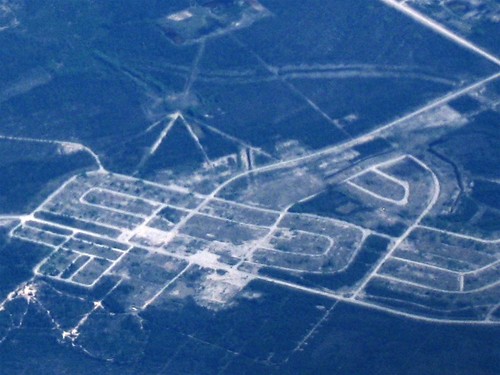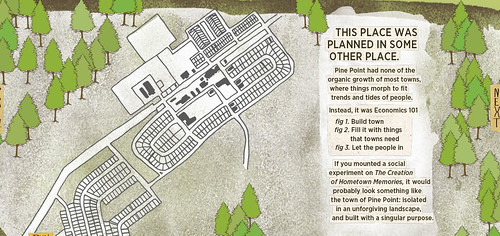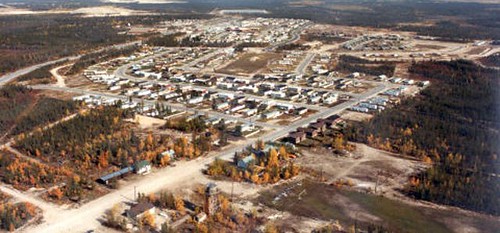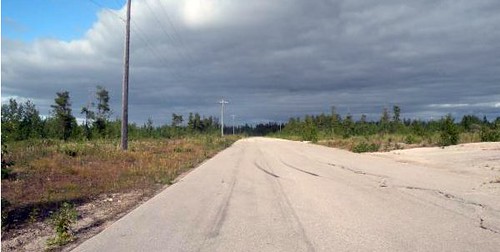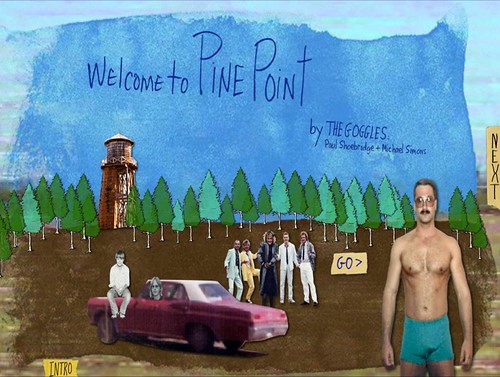The haunting disappearance of Pine Point, pop. 1200

Posted October 31, 2011 at 1:33PM
Like most people in my generation, I heard about ghost towns as a kid. They showed up in western movies, generally as dusty old places deserted after a 19th-century heyday during a gold rush or something equally exotic-seeming to a kid in North Carolina. They were relics of a distant past I could conjure only in my imagination.
More recently, I have learned and written about some “almost” ghost towns of our own time, such as Braddock, Pennsylvania, mostly deserted after the factories closed but now attempting a bold comeback. Salton City, California, a resort that never quite happened, also comes to mind. But those towns never disappeared altogether. Both have thousands of residents today, if far fewer than they might wish.
That’s not the case with Pine Point, once in a remote part of Canada’s Northwest Territories. A relatively normal small town for about 25 years, Pine Point simply disappeared in the late 1980s, after the local mining operation shut down. It exists today only as vacant streets, a cemetery, a basement of an old hotel that no longer exists above ground, and the memories of its former inhabitants.
There had been a few buildings on the site, but the town as most remember it was built in the early 1960s by a joint venture between the government of Canada and the Cominco mining company. It had the usual small-town businesses, an elementary school and a combined middle/high school. If you visit the folksy town-history site Pine Point Revisited or navigate your way through a hypnotic website called Welcome to Pine Point (about which more in a minute), you’ll meet characters familiar to towns and high schools everywhere: popular kids and intellectual loners; jocks and cheerleaders; kids in a rock band; guys who got in fights and the pretty girls who liked them for it.
After the Cominco mine closed in 1988, the town no longer had a means of existence. As Pine Point’s Wikipedia entry notes, “all buildings were removed or demolished, and today the site is completely abandoned, although there is still evidence of the street layout.”
Welcome to Pine Point is a captivating, interactive, web-based documentary. It’s not a film in the usual sense because it engages the user directly. The best description I have seen is on a site called Delineation of Design:
“Have you ever heard of Pine Point, a small mining town that once existed in the Northwest Territories of Canada? Me neither. But I’ve been haunted by this document since I first saw it yesterday. It was authored by the creative team formerly behind the venerable Adbusters magazine. I read about it on Very Short List, who wrote that they ‘can’t think of a narrative-based Web object that’s taken better advantage of the medium.’ Indeed, this project really shows the potential of new media to chronicle the human experience.
“It’s like a scrapbook with superpowers.”
Indeed it is, and the site is made all the more powerfully evocative by a haunting soundtrack composed and performed by a band called The Besnard Lakes. It reminds me of the moody music that accompanied David Lynch’s classic, creepy-but-fascinating TV series from the 1980s, Twin Peaks.
Some years ago a friend took me to visit an artist acquaintance in a loft in lower Manhattan. I can’t remember the artist’s name, but his medium was environmental sound. His studio was filled with electronics and little speakers all over the place. He was working on a piece that would be installed in a public plaza or park, with multiple speakers hidden in the landscaping. The sound would be so subtly ambient, and increase in volume so gradually, that someone walking through would not even notice.
Until it was silenced, as it would be abruptly. Then the listener would realize that she had been hearing something, which she could now experience only through memory.
Welcome to Pine Point made me remember that visit, because in its case the entirety of the community can now be experienced only through memory. Take a little time and work your way through the site. You won’t be sorry.
Move your cursor over the images for credit information. Thanks to Lisa Kersavage for the tip to this story.

